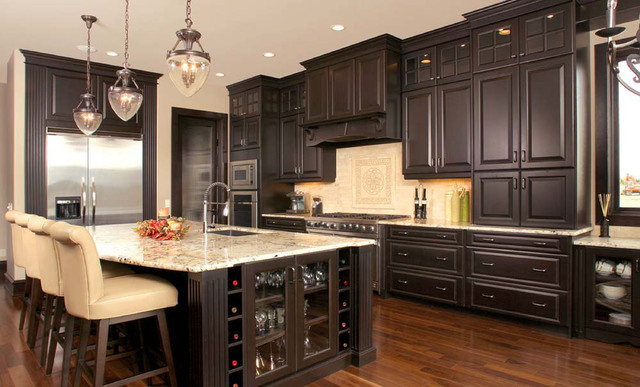Your beautiful kitchen can also function beautifully
The best kitchens not only look beautiful but also function beautifully, making it easier for you to find the saucepan you need, as well as its lid. You don’t want to heft a big pile of heavy platters to try to slide out the lasagna pan from the bottom, and you certainly don’t want to waste money when food spoils in your refrigerator because you couldn’t see what was in that baggie or foil-covered dish until weeks after it had gone bad.
Solve all of these problems, and others, by giving your kitchen an organization makeover. Here are 10 steps to achieving an organized, functional kitchen that’s also beautiful:
1) Make it a multiday project. Tackle one section of your kitchen at a time (such as your pantry on one day, your cabinets above the counter on another day, etc.) rather than pulling out everything in all of your drawers, cabinets and the refrigerator, thinking you can get the job done in one shot.
That’s far too overwhelming, and with every surface covered as you try to do it all at once, your kitchen will be rendered useless for perhaps several days. Plus, doing one section at a time gives you that wonderful feeling of accomplishment when you get each smaller area completed, creating momentum and keeping you fresh and energetic to do the jobs well.
2) Stock up on terrific organization products. Julie Morgenstern, author of “Organizing From the Inside Out,” says to “use space-savers to stretch storage capacity within each section.” Morgenstern suggests using the following:
n Wire shelves that “take advantage of wasted space between widely spaced shelves,” and can also be door-mounted to hold pantry food items. Narrow wire shelves can also be found with magnetic backings to hang on the sides of your refrigerator to hold small items.
n Hooks mounted under shelves on which to hang coffee mugs (thus opening up space inside cabinets).
n Lazy Susans placed on shelves and in cabinets to hold spices, canned goods and cups.
n Drawer dividers to keep utensils in their place.
n Clear storage containers with lids — lots of them — for storing bulk-buy foods or leftovers in the refrigerator so that you can easily see that delicious leftover shrimp and enjoy it the next day, instead of noticing a smell a week later and having to throw out $25 worth of shrimp.
n A label-maker. A great one allows you to customize the font style and size, and labels peel off easily, making your storage containers easily identifiable.
3) Map out your kitchen’s zones to help you reposition items for each section’s function. Morgenstern suggests the following zones: daily dishes, food preparation, cooking, cleanup and recycling.
While working on, say, your pantry, you may find an item for “cleanup.” Just move it to that done or undone area as you go. And a new zone established for baking allows all of your baking tasks to be much more streamlined and enjoyable.
4) Before you begin your first kitchen section, set up large, trash bag-lined bins or sturdy boxes labeled; “toss,” in which you’ll deposit old sauces, spices and unusable items; “donate,” in which you’ll deposit canned goods, dishes and other items that can be used or sold at a mission or shelter; or “store,” in which you’ll deposit items that you use rarely and are better stored in your basement.
5) Remove everything from the pantry or cabinet you’re tackling, and first give your shelves a good cleaning and fresh, clean liner paper in a color or pattern you love. Shelf or drawer liners set a foundation for your kitchen’s makeover.
6) Change your drawers plan. If you previously stored all of your utensils in one drawer, switch to one drawer for everyday eating utensils and most-often-used gadgets. Then the next drawer can hold your larger cooking and baking utensils.
7) Go vertical. Try stacking your cookbooks flat, instead of standing on end, to use more vertical space and create a new and attractive display of those books you use often. Store books you haven’t used in the past three years elsewhere or donate those that are unwanted.
8) Remove clutter. Morgenstern says, “Deport tchotchkes to create room for food prep,” and “banish surface clutter so your space feels clean and welcoming.” If you’d love for your collectibles to remain on display, switch their position to a narrow wall or magnetic fridge rack, clearing your counter.
9) Remove as much from your refrigerator as possible. That means magnet-held coupons, relatives’ kids’ photos, outdated schedules and magnets from restaurants or the gutter cleaners. It’s OK to have a little-item drawer if you’d like to have these items and pens on hand. But clearing your fridge creates a more polished look.
10) Set up a tech center, including your laptop and its stand, so that you can easily access recipes you’ve bookmarked or scanned into your system and your family’s activities calendar. A built-in desktop and chair make this zone comfy and modernize your kitchen’s functionality.




























